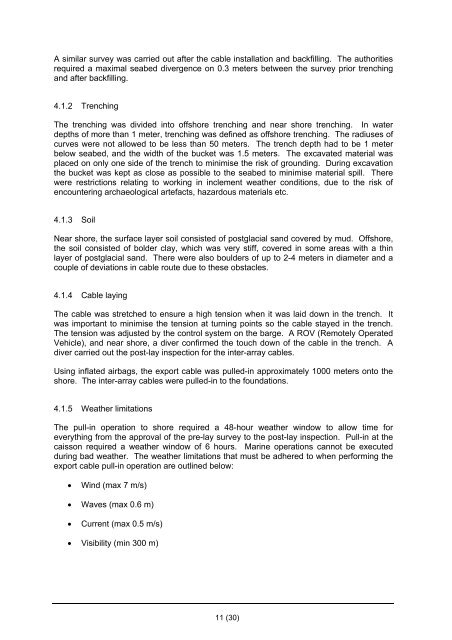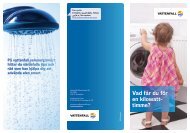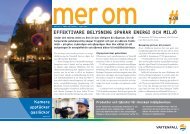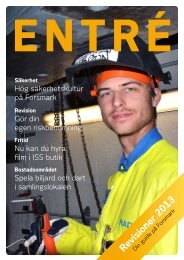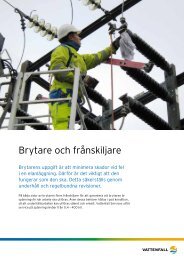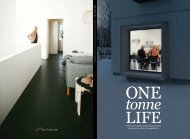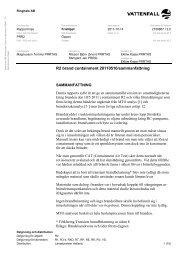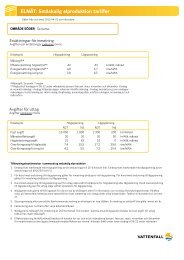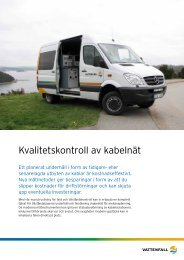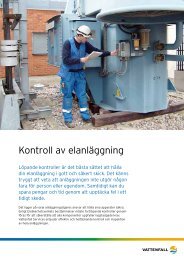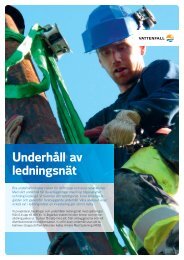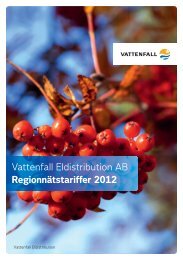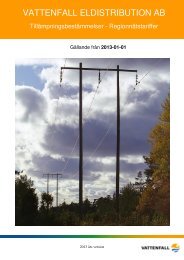Offshore Cable Installation - Lillgrund - Vattenfall
Offshore Cable Installation - Lillgrund - Vattenfall
Offshore Cable Installation - Lillgrund - Vattenfall
You also want an ePaper? Increase the reach of your titles
YUMPU automatically turns print PDFs into web optimized ePapers that Google loves.
A similar survey was carried out after the cable installation and backfilling. The authorities<br />
required a maximal seabed divergence on 0.3 meters between the survey prior trenching<br />
and after backfilling.<br />
4.1.2 Trenching<br />
The trenching was divided into offshore trenching and near shore trenching. In water<br />
depths of more than 1 meter, trenching was defined as offshore trenching. The radiuses of<br />
curves were not allowed to be less than 50 meters. The trench depth had to be 1 meter<br />
below seabed, and the width of the bucket was 1.5 meters. The excavated material was<br />
placed on only one side of the trench to minimise the risk of grounding. During excavation<br />
the bucket was kept as close as possible to the seabed to minimise material spill. There<br />
were restrictions relating to working in inclement weather conditions, due to the risk of<br />
encountering archaeological artefacts, hazardous materials etc.<br />
4.1.3 Soil<br />
Near shore, the surface layer soil consisted of postglacial sand covered by mud. <strong>Offshore</strong>,<br />
the soil consisted of bolder clay, which was very stiff, covered in some areas with a thin<br />
layer of postglacial sand. There were also boulders of up to 2-4 meters in diameter and a<br />
couple of deviations in cable route due to these obstacles.<br />
4.1.4 <strong>Cable</strong> laying<br />
The cable was stretched to ensure a high tension when it was laid down in the trench. It<br />
was important to minimise the tension at turning points so the cable stayed in the trench.<br />
The tension was adjusted by the control system on the barge. A ROV (Remotely Operated<br />
Vehicle), and near shore, a diver confirmed the touch down of the cable in the trench. A<br />
diver carried out the post-lay inspection for the inter-array cables.<br />
Using inflated airbags, the export cable was pulled-in approximately 1000 meters onto the<br />
shore. The inter-array cables were pulled-in to the foundations.<br />
4.1.5 Weather limitations<br />
The pull-in operation to shore required a 48-hour weather window to allow time for<br />
everything from the approval of the pre-lay survey to the post-lay inspection. Pull-in at the<br />
caisson required a weather window of 6 hours. Marine operations cannot be executed<br />
during bad weather. The weather limitations that must be adhered to when performing the<br />
export cable pull-in operation are outlined below:<br />
• Wind (max 7 m/s)<br />
• Waves (max 0.6 m)<br />
• Current (max 0.5 m/s)<br />
• Visibility (min 300 m)<br />
11 (30)


